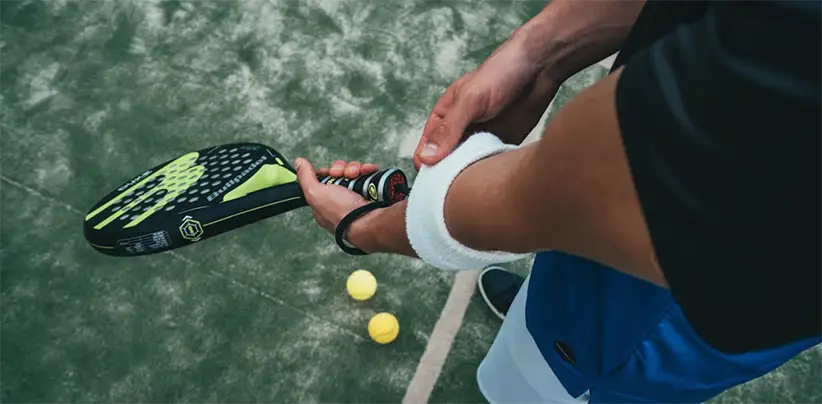As a tennisnerd, surely you came across the game of Padel by now. We know it has divided the tennis community whether it’s a threat to tennis or just another fun sport to enjoy.
Padel is a fast game that is really easy to learn and get started. It’s a racquet sport that combines elements of tennis, squash, and badminton into a way that has become super popular around the world.
Here we’ll look closer at all about Padel, how it works, comparison to tennis, strategies and the future of the sport.
Also, don’t miss our Padel blog where we blog or review new padels from time to time.

Brief History of Padel
Although it feels like brand new new sport, its origin actually dates back to 1969 in Mexico, crafted by Enrique Corcuera, a Mexican entrepreneur. Having noticed his limited space at his beach house, he invented this mixture of tennis and squash, now known as Padel.
Adapting tennis to a smaller court, he erected walls around it, permitting ball rebounds. This innovative feature set Padel apart from most racquet sports, making it more suitable for certain locations.
Starting as a hobby activity, Padel rapidly gained popularity. By the mid-70s, it had spread to Argentina and Spain mainly. Tennis player, Alejandro Ciriza, transported Padel to Spain and introduced it to the Spanish Prince, Alfonso de Hohenlohe. The Prince was impressed and built the first Padel club in Marbella. The sport’s growth in Spain is crazy, it’s now second only to football in sporting popularity.
An important milestone in Padel’s progression was the creation of the International Padel Federation in 1991, establishing a platform for competitive Padel all over the world. This Federation organized the first Padel World Championship in Spain in 1992.
From then on, Padel’s reach expanded exponentially, becoming an exciting and fast-paced sport loved globally, and continues to gain ground, especially in Europe and America. Its simplistic design and modest equipment requirements make it a favorite among many.
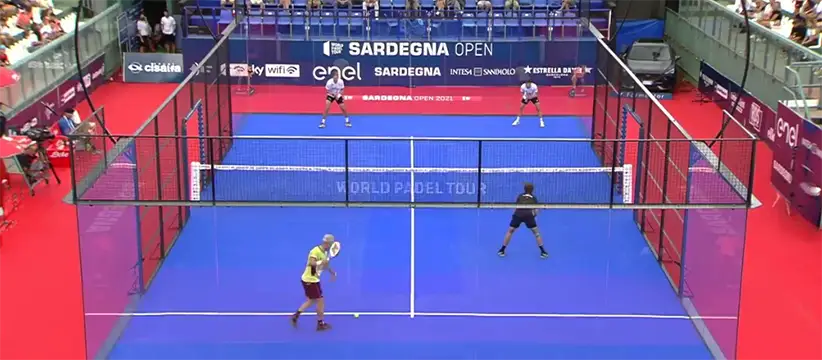
The Rules of Padel
These guidelines will help you understand the basic rules of Padel very easy.
Court Dimensions
Every Padel court measures 20m x 10m, surrounded by glass walls at the rear and wire mesh on the sides. There’s also a net in the centre, similar to tennis.
Scoring System
The scoring system will be easy to learn if you already play tennis… It goes from love (0), 15, 30, and 40, to game. A set’s won when a team reaches 6 games, although there’s a difference of at least 2 games. In instances where a set reaches 6 – 6, you resolve it via a tie-break.
Service
In Padel, the serve’s underhand and must bounce in the opposite square, similar to tennis. If it’s successful, the ball can hit the walls.
Ball in Play
The most significant distinction in Padel lies in the rule that allows the ball to hit the side walls or the fencing before it bounces in the opponent’s court. It’s this aspect that brings in elements of Squash into Padel, making the game very dynamic.
Faults
As in tennis, double faults lead to the opponent winning the point in Padel. The common faults in Padel include serving above waist level, the ball touching the wall before bouncing in the opponent’s square or the ball bouncing more than once in your court.
Padel Court Layout
When getting onto a padel court, it’s easy to notice the unique structure that sets it apart from most other racquet sports. Rectangular in shape and enclosed by walls, a padel court measures 20 meters in length and 10 meters in width. The net stands at a height of 88 centimeters in the middle and 92 centimeters at the posts.
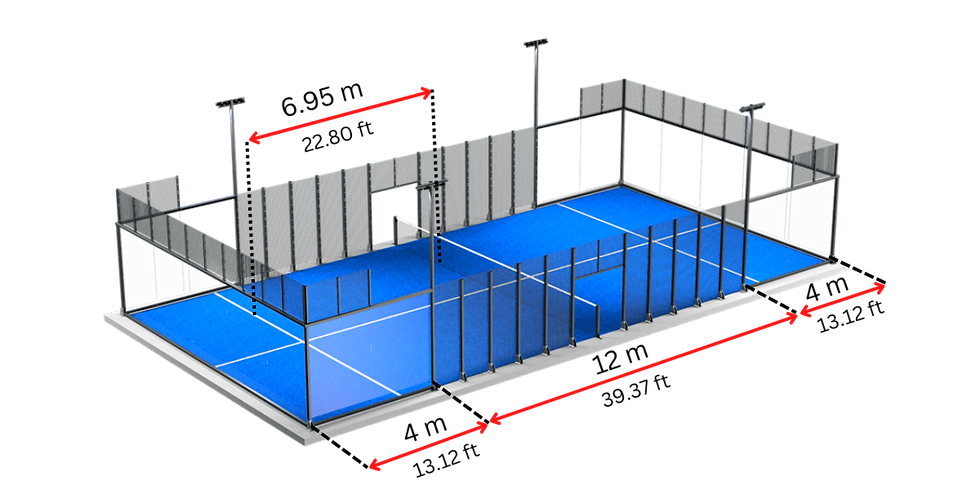
Court Surface and Materials
The padel court is built with artificial grass on top of a solid base of concrete or crushed stone, it’s specifically designed to enhance grip and to ensure a consistent bounce. The walls around the courts are made of a combination of glass and metal mesh.
Court Markings
The court markings is one of the first things to learn when starting to play padel. Similar to tennis, there’s a service line located 3 meters from the net, and a service box bordered by the service line, the sidelines and additional parallel lines 6 meters from the back wall. These are important, not only for serving but also for learning a strategic gameplay, more on that further down.
Padel Walls
One unique aspect of padel, as mentioned before, is the ability to play the ball off the walls. The glass wall behind the server rebounds the ball into play, while the wire-mesh sections on the side allow for strategic angled shots. This adds an extra layer of complexity to the game yet also adds to the fun.
Through understanding the layout of a padel court, players can take advantage of its design and maximizing their gameplay strategies.
Rackets and Equipment
Just like in tennis, choosing the right gear is important as well. With padel, you’ll find a big variety of shapes, weights and materials made to specific skill levels.
Rackets / Padels and Balls
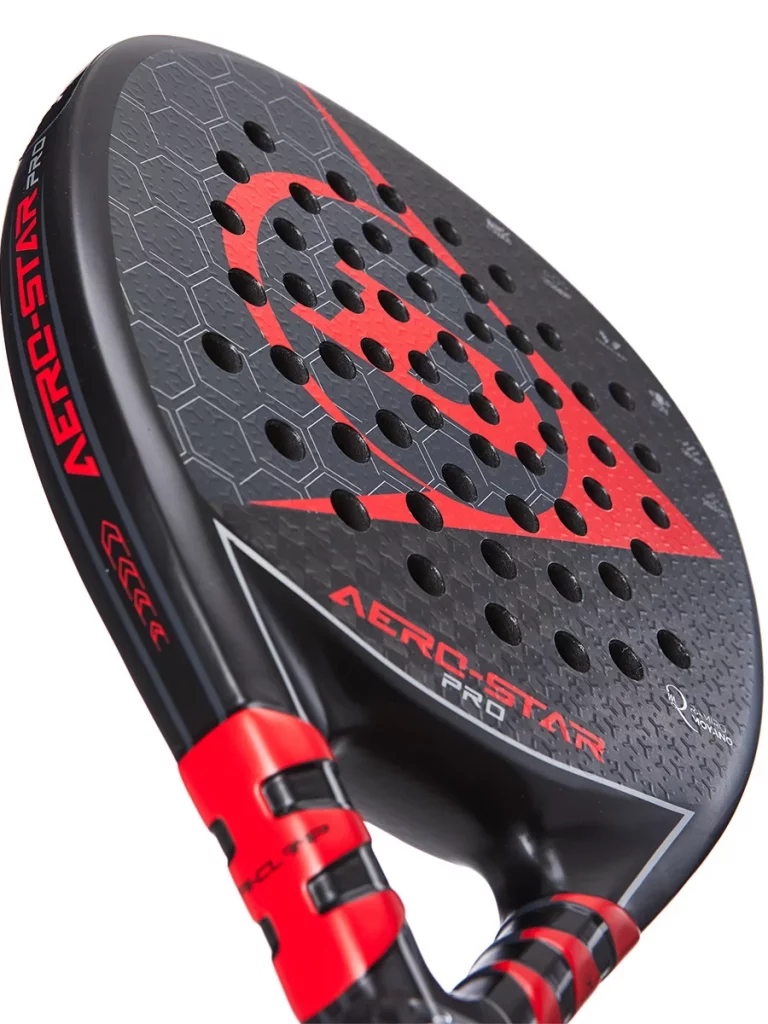
A padel racket is a solid, perforated piece of equipment without strings. Unlike tennis rackets, padel uses an EVA or FOAM core sandwiched between two composite faces, usually carbon fiber or fiberglass. EVA core rackets offer higher precision and speed, making them great for experienced players. FOAM core rackets permit better control and are softer, making them better for beginners.
The three main padel racket shapes are diamond, round, and teardrop. Each comes with its strategic advantages. Diamond-shaped rackets deliver high power and are suitable for advanced players that knows how to control the ball. Round-shaped rackets focus on easier control, ideal for beginners, while teardrop-shaped ones strike balance between power and control, making them a good choice for intermediate players.
Padel balls closely resemble tennis balls but are a bit smaller and have less pressure, basically they move slower and bounce lower.
How Similar is Padel to Tennis?
On the surface, tennis and padel seem quite similar. Both have courts delineated by lines, both use nets to divide the playing field and, well, you’re hitting a ball with a racquet :)
There are some distinct differences though. For starters, padel courts are smaller. Most measure about one third of a tennis court. Also, in padel, balls bounce a bit lower and slower which affect the speed of the game. Not at least, the walls surrounding a padel court are functional, as the ball can be hit off them, similar to squash.
Let’s explore this comparison through the following points:
- Racquets: In tennis, stringed racquets are used, allowing for topspin and underspin. While in padel, solid racquets made of carbon fibre, fibreglass or graphite that have no strings are used. These racquets have a perforated surface for hitting the ball.
- Court Size: Tennis courts are significantly larger at 78 feet by 36 feet, whereas a padel court measures 66 feet by 33 feet.
- Walls: Padel incorporates the use of walls in the gameplay where tennis does not. The wall in padel acts like another player on your team, as the ball can bounce off of it.
- Scoring System: Both sports use almost the same scoring system, which originates from tennis.
Knowing how to play tennis will help a lot when starting to play Padel, however, it does not automatically mean you’ll be a great player right away. The differences are too many when going from tennis to padel.
Padel Playing Strategies
The strategies for how to improve in padel is quite different from tennis. Mainly because of the small court, soft ball and most of all, the surrounding walls. Let’s check a few basic things to learn.
Attack from the net
Advantage in padel often lies at the net. Front players can get more control, especially with volley shots. A successful volley, hit out of the air before the ball bounces, keeps opponents off balance.
Vibrating the Padel ball
The slower padel ball, coupled with the composite racquet, allows for a unique strategy in shot selection. This is known as the ‘vibora’ shot, a type of spin-heavy slice. It results in a ball that vibrates unpredictably when bouncing, thus, making it harder for opponents to return effectively.
Using the walls
In padel, the walls can be used in many ways for various strategic play, unlike in tennis where they represent boundaries. Skillful use of the walls allows players to hit unreachable shots or slow down the game, buying time and disrupting the rhythm of opposing players.
Consistency over Power
While hitting the ball hard might seem the most effective method, it’s not always the case in padel. The soft padel ball and enclosed court mean power shots are easier to return since the ball rebounds off the back wall. Instead, consistency is key; targeting weak spots in your opponents’ defence is important in Padel matches.
Serve Placement
The serve in padel, though maybe not as crucial as in tennis, still forms an integral part of the strategy. A well-placed serve can start off the rally on your terms, putting pressure on opponents from the onset. For example, a serve that moves your opponent out wide opens up the court for subsequent shots.
Padel/Pickleball differences
If you’re from the US, maybe you are more familiar with Pickleball, another variation of racquet sports. But what are the differences between Padel and Pickleball?
In pickleball, the court measures 20 feet by 44 feet, similar in dimensions to a badminton court while Padel courts are 20 feet by 66 feet. A big difference is of course the enclosing wall in Padel, compared to the open pickleball court.
Padel uses stringless solid paddles and a smaller, less reactive ball. On the flip side, in pickleball you use a larger, perforated plastic ball and a larger solid paddle, resulting in faster action and quicker reactions.
Padel adopts the scoring system of tennis, where matches go best out of three sets, and the eleven-point tiebreak is in effect when sets reach six games apiece. Pickleball, however, considers even one point vital, since players score only when they serve, reaching up to 11 points with at least a two-point lead to win.
Pickleball matches often take less time, typically running about 12-15 minutes. Padel, with its longer rallies, and strategic gameplay usually extends the time to one or two hours.
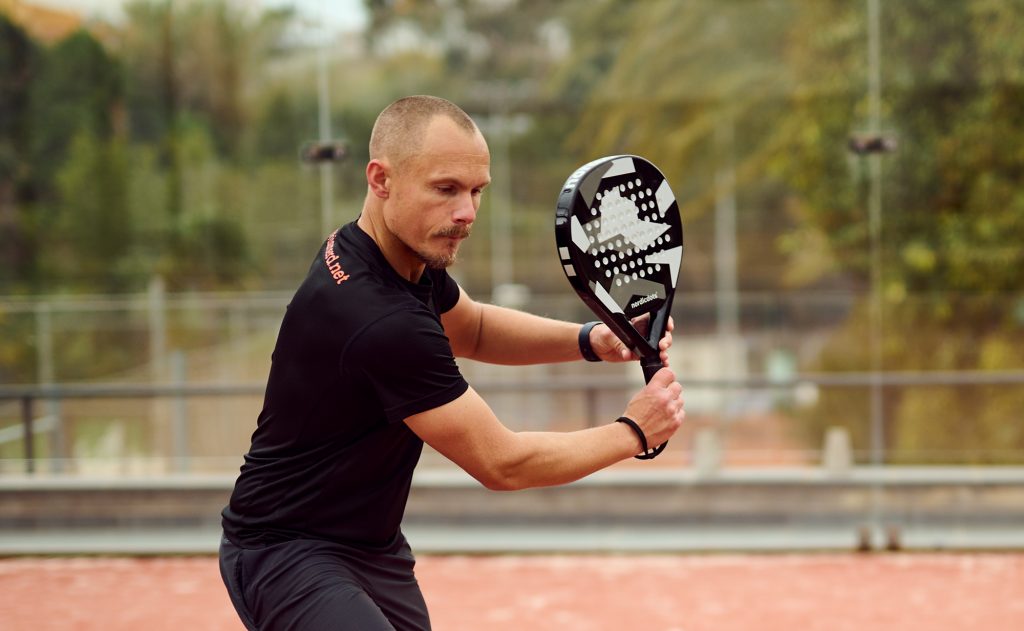
The future?
Looking ahead, Padel’s prospects appear bright, yes. As the sport continues its meteoric rise in popularity worldwide, more countries now recognize it as a professional sport. The International Padel Federation now has over 35 member countries.
Advancements in technology add another layer to Padel’s evolution, just like most other sports. Smart paddles and augmented reality training programs are just a few of them.
The massive peak of the sport we saw some years ago, at certain countries, has maybe fallen back slightly, however… New courts continue to pop up, from private clubs to public facilities. Accessibility won’t be an issue in Padel’s future, with clubs also opening in urban places. Over 15,000 Padel courts exist in Spain alone…
With the uprise of the sport, so comes wagering, and betting on Padel is now being a more frequent activity at many of the major bookmakers.
Regular, big tournaments are now standard and quite significant prize money, celebrity endorsements, media coverage etc, all point to a bright future in Padel.
What’s your opinion on Padel, have you become a Padelnerd or you stay focusing only on tennis?
